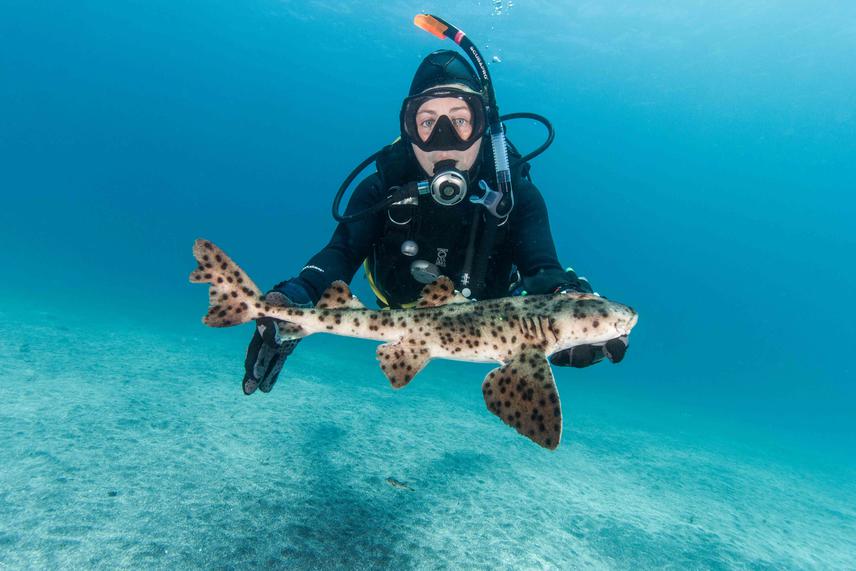Maximilian Hirschfeld
Other projects
26 Apr 2012
Biotelemetry of Juvenile Blacktip Sharks and the Conservation of Key Nursery Habitats in the Galapagos Archipelago
3 May 2016
Population Connectivity of Galapagos Bullhead Sharks and the Identification of Key Habitats for Conservation in the Galapagos Archipelago
The Galapagos Bullhead Shark Project was established through a second Rufford grant with the aim to fill gaps in scientific knowledge of a little known and elusive marine species. The Galapagos bullhead shark, Heterodontus quoyi, has a relatively small geographic distribution including the northern coast of Perú and the Galapagos Islands. Central to this project is to determine the current level of connectivity of the population and to identify specific habitats that are essential for the sharks’ development and reproduction. Drawing from various disciplines the project aims to identify potential natural and man-made threats, evaluate current levels of protection of the sharks and their habitats and generate suggestions for effective conservation management.

Diver handling a large bullhead shark.
Balancing Scientific Discovery and Conservation:
Scientific knowledge is central to creating measurable and long-lasting conservation outcomes. Generating this knowledge, however, becomes particularly challenging when working with data-poor species. The Galapagos Bullhead Shark Project was established through a second Rufford grant with the aim to fill gaps in scientific knowledge of a little known and elusive marine species. The Galapagos bullhead shark, Heterodontus quoyi, has a relatively small geographic distribution including the northern coast of Perú and the Galapagos Islands. These distant locations may be disconnected by large distances and Deep Ocean that pose a strong physical barrier for the migration of the small-bodied sharks. Consequently, the Bullhead sharks may have evolved into distinct groups that lack exchange of genetic information and experience different levels of natural and man-made threats.
In order to delineate discrete groups of the population and determine their current level of connectivity this project draws from several disciplines. Advanced genetic and genomic techniques will allow us to estimate bullhead shark migration rates and levels of genetic exchange between islands within the Galapagos and between the archipelago and the South American mainland. Moreover, life history parameters, such as the body size at which the sharks mature and contribute to population growth, will be described to determine the demographic structure of the bullhead shark population. This biological information is essential to estimate population trends and evaluate the species’ risk of extinction. In order to identify potential threats the spatial distribution of the species will be described using species distribution models. This approach will define the habitat requirements of the bottom-living sharks and if there are specific habitats that are essential for their development and reproduction.
A lack of connectivity among the bullhead shark population may result in a marked genetic structure, varying life history and local demographic rates. Disconnected groups of the population may be exposed to different levels of threats while lacking replenishment from adjacent locations and would therefore require different management approaches. Generating scientific knowledge across disciplines will provide several lines of evidence to delineate distinct groups of the bullhead shark population. It can then be evaluated whether different groups are exposed to natural or man-made threats, if adequate protection of key habitats is currently in place and what approaches are likely to result in effective conservation management.